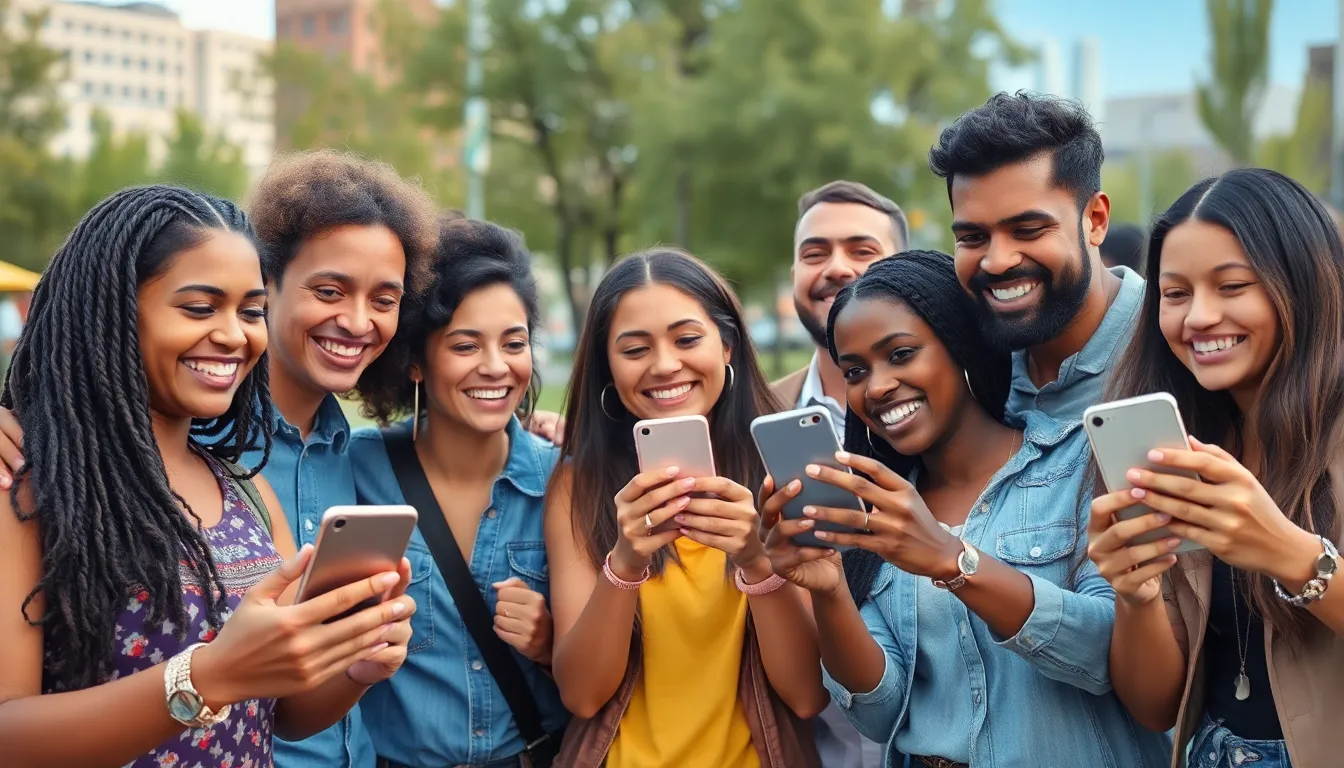In a world where content is king, user-generated content tools are the royal advisors every brand needs. Imagine harnessing the creativity of your audience to create engaging content that feels authentic and relatable. It’s like having a team of enthusiastic interns who actually know what they’re doing—without the coffee spills and awkward small talk.
These tools not only empower users to share their experiences but also help brands build a community that thrives on genuine interaction. Whether it’s photos, reviews, or videos, user-generated content brings a fresh perspective that can elevate marketing strategies to new heights. So buckle up and get ready to explore how these innovative tools can turn your audience into your most powerful brand advocates.
Table of Contents
ToggleOverview Of User-Generated Content Tools
User-generated content tools facilitate the creation and management of audience-driven content. These tools help brands engage with their customers in authentic ways. Platforms like Yelp and TripAdvisor allow users to share reviews and experiences, enhancing credibility.
Social media channels such as Instagram and TikTok also play a significant role. Users create posts that showcase products, providing relatable content. Brands can repurpose this content for marketing campaigns, making advertising more authentic.
Collaborative platforms like BuzzSumo and Crowdriff enable brands to curate user content effectively. Marketers can analyze trends and determine which content resonates most with their audience. This insight drives more effective strategies.
Additionally, video creation tools such as TikTok and Vimeo empower users to generate engaging video content. Brands that leverage this format often see higher engagement rates. With user-generated videos, businesses can build community and trust.
Engagement metrics help brands evaluate the success of user-generated content campaigns. By tracking likes, shares, and comments, brands can optimize future strategies. Insights from analysis lead to more relevant campaigns that align with audience interests.
Ultimately, user-generated content tools represent a vital component of modern marketing strategies. Leveraging these tools leads to increased brand loyalty and customer satisfaction. Brands that embrace user creativity often enjoy a stronger community connection.
Benefits Of User-Generated Content Tools

User-generated content tools offer several key advantages for brands looking to enhance their marketing strategy. By utilizing these tools, brands can tap into the creativity of their audience and drive engagement.
Increased Engagement
Engagement levels rise significantly when brands encourage user participation. Users are more likely to interact with content they create or contribute to. Sharing photos and reviews enables authentic connections, driving conversations around a brand. Marketing campaigns that incorporate user-generated content achieve higher visibility. This visibility often leads to increased shares and likes, which amplify reach. Brands using these tools see up to a 28% increase in user engagement. Creatively showcasing user content serves as a powerful way to foster community involvement.
Authenticity And Trust
Authenticity establishes a vital connection between brands and consumers. User-generated content presents real experiences, enhancing trust in the brand. Consumers relate more to content that features their peers rather than traditional advertising methods. Reviews and testimonials create an environment of transparency, which is crucial for building loyalty. Brands that leverage this type of content demonstrate confidence in their products. As a result, potential customers are more likely to trust brands utilizing user-generated content tools, with 79% of consumers indicating that user-generated content highly influences their purchase decisions.
Types Of User-Generated Content Tools
User-generated content tools come in several categories, each serving distinct purposes. These tools enable brands to harness the creativity of their audience effectively.
Social Media Platforms
Social media platforms play a crucial role in facilitating user-generated content. Instagram and TikTok allow users to showcase products and experiences in engaging formats. Brands can repost user content, enhancing relatability and authenticity. Engagement increases significantly when users see their contributions featured by brands. Additionally, platforms like Facebook foster community discussions that deepen customer connections. Users often share their stories and opinions, driving organic engagement and generating buzz around products.
Review and Rating Sites
Review and rating sites significantly enhance brand credibility. Platforms such as Yelp and TripAdvisor allow customers to express their opinions about products and services. These sites provide essential feedback for potential buyers, guiding their purchase decisions. Brands that actively manage and respond to reviews demonstrate commitment to customer satisfaction. Encouraging users to leave ratings fosters a culture of accountability and transparency. Positive reviews can boost a brand’s reputation, while addressing negative feedback can lead to improved products.
Content Creation Applications
Content creation applications empower users to develop diverse types of media. Tools like Canva and Adobe Spark enable users to create visually appealing content quickly. Users can generate graphics, videos, or presentations with ease, enhancing brand visibility. Brands can integrate user-created content into their marketing strategies for a fresh perspective. These applications often include collaboration features, allowing multiple users to contribute ideas simultaneously. Encouraging user-generated content through these tools enriches a brand’s content library while enhancing community involvement.
How To Choose The Right Tool
Selecting the right user-generated content tool requires careful consideration of specific factors that align with brand objectives and audience needs.
Identify Your Goals
Establishing clear marketing goals is crucial before choosing a tool. Brands often focus on increasing engagement, building community, or enhancing authenticity. Specific objectives, such as boosting social media interactions by 30% over six months, provide measurable benchmarks. Prioritizing goals helps narrow down options available in the market. Each tool has strengths, whether in content curation, analytics, or conversational engagement. Identifying what success looks like allows for selecting a tool that best supports those aims.
Consider Your Audience
Understanding the target audience plays a pivotal role in tool selection. Brands should analyze demographic insights, interests, and preferred content formats. Engaging with consumers through platforms they frequent increases the chances of meaningful interactions. For instance, younger audiences may prefer TikTok or Instagram, while older demographics might gravitate towards Facebook or LinkedIn. Assessing where the audience engages most informs decisions about which tools enhance community-driven content. Listening to consumer feedback through surveys or reviews helps tailor the approach, ensuring the chosen tool aligns with audience preferences.
User-generated content tools are transforming the marketing landscape by empowering brands to connect authentically with their audiences. By leveraging the creativity and experiences of users, brands can create content that resonates deeply and fosters community engagement.
The right tools not only streamline content creation but also enhance credibility and trust. As brands navigate this dynamic environment, understanding audience preferences becomes crucial. With the right approach, user-generated content can lead to increased loyalty and satisfaction, making it an indispensable part of any modern marketing strategy. Embracing these tools will undoubtedly yield significant benefits for brands seeking to strengthen their community connections.





